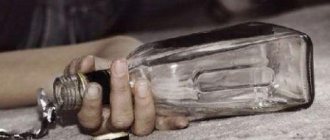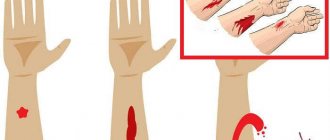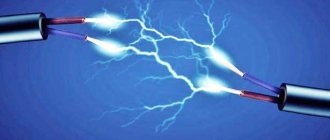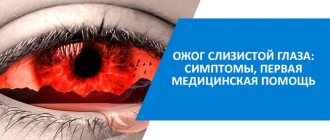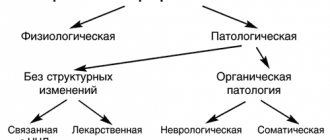Arterial hypertension (hypertension) is persistently high blood pressure. The majority of patients suffer from essential hypertension (hypertension accounts for 90 to 95% of cases); in other cases, symptomatic, secondary arterial hypertension is determined: endocrine, neurological, stress, renal, hemodynamic and others. Arterial hypertension is a common pathology of the cardiovascular system, most often affecting people over 40 years of age, and the number of cases increases with age.
One of the complications of arterial hypertension is a hypertensive crisis, during which an exacerbation of the symptoms inherent in arterial hypertension occurs.
Cardiologists and therapists at the Yusupov Hospital treat hypertensive crisis. The hospital doctors carry out rapid relief of a hypertensive crisis with the help of modern medications, prescribe an examination to determine the cause of the crisis - a cardiologist refers for an examination of the heart, the condition of the fundus, and diagnostics of kidney function.
The Yusupov Hospital is equipped with innovative medical equipment for diagnostic studies, and Holter monitoring of blood pressure and heart function is carried out. The hospital includes a clinical laboratory, a diagnostic center, a hospital, several multidisciplinary departments, a rehabilitation center, and care for seriously ill patients is provided in the intensive care ward.
Why does hypertension develop?
Various factors contribute to the development of hypertension; very often patients are unaware of their disease until the first hypertensive crisis.
Most often, hypertension develops in people who work night shifts and have heavy physical and psycho-emotional stress. In the development of the disease, hereditary predisposition, intrauterine development disorders, birth injuries, as well as various external factors are of great importance: climate, unbalanced nutrition, work in harmful conditions, harsh ecology, personality traits and psyche, and the ability to build relationships with people.
A hypertensive crisis is a violation of the mechanisms of blood pressure regulation, which occurs abruptly, causing circulatory disorders in the organs. There are two types of crises: hyperkinetic (at the early stage of arterial hypertension) and hypokinetic (at a late stage of the disease, against the background of initial high blood pressure). A hyperkinetic crisis develops acutely, is accompanied by severe symptoms of the disease, and adrenaline predominates in the blood. The hypokinetic crisis is less acute; norepinephrine predominates in the blood. The diagnosis of “hypertensive crisis” is made based on several indicators:
- High rise in blood pressure.
- Sudden onset of crisis.
- Symptoms of cardiac, cerebral and vegetative nature.
Causes and predisposing factors
Most often, hypertensive crises occur in people suffering from high blood pressure, who for some reason do not receive proper treatment, do not follow the recommendations prescribed by the doctor regarding daily routine, nutrition, physical and emotional stress, and also independently stop taking antihypertensive medications.
All people suffering from hypertension should always carry blood pressure lowering medications with them as HC can happen anywhere. However, it happens that a person does not even know that he has some problems with blood pressure. A sudden hypertensive crisis may be the first manifestation.
A hypertensive crisis, the symptoms, causes and treatment of which will be discussed below, develops as a result of a malfunction of the autonomic nervous system. The amount of hormones in the blood increases, which increase blood pressure and also retain water, thereby increasing the volume of circulating blood. The vascular tone does not correspond to the volume of blood, which further aggravates the situation. The heart is forced to work under increased load for which it was not prepared. The need for oxygen increases.
Causes:
- The most common cause of a hypertensive crisis is the withdrawal of antihypertensive drugs. By taking these medications, the patient brings his blood pressure to normal levels, feels good and decides that it will not rise even without pills. Failure to comply with the dosage of medications or their incorrect prescription can also result in a hypertensive crisis.
- GK can provoke stress and strong emotional experiences.
- Very often, the pressure of weather-dependent people seriously increases when the weather changes.
- HA can occur during significant physical strain, when the heart is forced to work under severe overload.
- Alcohol and cigarettes constrict blood vessels, causing blood pressure to rise. Most often, these reasons provoke HA in men.
- Consuming increased amounts of salt, which retains water in the body and increases blood volume.
- Head injury.
Hypertensive crisis can occur due to certain diseases:
- oncology;
- glomerulonephritis;
- nephroptosis;
- some pathologies in pregnant women;
- atherosclerosis;
- Itsenko-Cushing's disease.
Symptoms
During a hypertensive crisis, blood pressure rises sharply, and the symptoms of arterial hypertension worsen. Blood pressure can rise to 180/110, 230/130 and higher.
A certain part of patients with arterial hypertension get used to high blood pressure and practically do not feel a blood pressure of 200/110, feel only a slight malaise, and continue to perform their duties.
A hypertensive crisis is characterized by a sharp increase in blood pressure, which is accompanied by severe headache, nausea, vomiting, tinnitus and other symptoms.
Often the development of a hypertensive crisis is preceded by certain symptoms:
the patient cannot sleep, worries, feels depressed, and gets irritated for no reason. Then the minimum and maximum pressure increases over a short period of time, and a headache of varying intensity begins to bother you.
During a hypertensive crisis, brain symptoms appear:
nausea and vomiting, severe headache. Such manifestations indicate increased intracranial pressure. Headache can occur in the area of the back of the head, crown, temples, forehead, and a feeling of numbness of the skin in the area of the back of the head and neck. The pain can be throbbing, dull, sharp, paroxysmal, or constant. This may indicate a cerebral circulatory disorder.
Some of the most common symptoms of a hypertensive crisis
– this is pain in the heart area, a feeling of squeezing, severe shortness of breath, arrhythmia. The pain may radiate to the shoulder blade, left arm, and be accompanied by nausea. During a hypertensive crisis, pain may occur in the abdominal area, and the patient often begins to limp. A hypertensive crisis is characterized by symptoms of disruption of the autonomic and central nervous systems: severe irritability appears, the patient is excited, red spots are visible on the skin of the neck and chest, the skin becomes moist. Chills begin, body temperature rises, and muscle tremors bother you.
In some cases, depression of the nervous system occurs and the patient becomes lethargic, indifferent, and constantly sleeps. A hypertensive crisis with a sharp depression of the nervous system can be accompanied by muscle twitching and cramps; the patient is in a coma between attacks. The patient develops speech disorder and decreased sensitivity of the limbs. Disorders of the cardiovascular system manifest themselves in the form of a variety of symptoms:
- Tachycardia or bradycardia
- Heart rhythm disturbances
- Muffled heart sounds, congestive wheezing in the lower parts of the lungs
- The ECG shows depression of the ST segment and flattening of the G wave - signs of systolic overload of the left ventricle of the heart.
During a hypertensive crisis, the appearance of red blood cells and protein in the urine is noted, and blood circulation in the kidneys deteriorates.
Treatment
How to treat a hypertensive crisis, what medications to take is decided by the attending physician.
Medicines for a hypertensive crisis are selected individually for the patient, taking into account possible complications of antihypertensive treatment, decreased cerebral circulation and the development of ischemic stroke. Drugs for hypertensive crisis are prescribed depending on the symptoms. With severe symptoms of damage to the nervous system, a sharp decrease in pressure can worsen the patient's condition. Drugs that have a moderate hypotensive effect are used.
In case of hypertensive crisis in cardiac patients, ACE inhibitors are used. The use of certain drugs is contraindicated for cardiac patients - clonidine is not used for sick sinus syndrome, bradycardia, atrioventricular block (II-III), the drug is contraindicated for depression, acute myocardial infarction, severe encephalopathy. Eufillin is not used in patients with epilepsy, frequent extrasystole, or paroxysmal tachycardia. In case of acute left ventricular failure during a hypertensive crisis, patients are prescribed diuretics, which complement and enhance the hypotensive effect of drugs for hypertension.
If a complicated hypertensive crisis develops, intensive therapy is carried out with careful monitoring of heart rate, blood pressure, and an ECG is performed, which helps to timely determine the development of bradycardia, heart block and other complications. When symptoms of damage to the kidneys, heart, or brain appear, the patient is admitted to the intensive care ward, where he is given urgent care, medications are carefully selected and dosed. The main groups of drugs for the treatment of hypertension are ACE inhibitors, beta blockers, diuretics, alpha blockers, calcium channel blockers.
Development mechanism
The level of blood pressure depends on the resistance (resistance) of the arteries and stroke volume - the amount of blood that is thrown into the aorta with each contraction of the heart. Stroke volume is formed from heart rate and the power of myocardial contractions. The higher they are, the higher the blood pressure.
Arterial resistance is a factor that makes it difficult for blood to move through the vessels and requires more work from the heart. Resistance depends on the nervous regulation of vascular tone and vasoactive substances that cause vasoconstriction or dilation. When the amount of vasoconstrictors (endothelin, catecholamines, angiotensin II) exceeds the level of vasodilators (prostaglandins), an imbalance occurs. An imbalance also develops if the nervous system operates in “stress” mode, activating the sympathetic-adrenal and renin-angiotensin-aldosterone systems (RAAS).
Violation of regulatory mechanisms causes a pronounced spasm of the arteries, their resistance to blood flow increases, and accordingly, blood passes through the narrow lumen of the vessel under high pressure - a sharp jump in blood pressure is observed. In response to spasm, inflammatory markers are released in target organs, which damage the vascular wall and cause necrosis (death) of small arterioles.
Damage to the target organ is manifested by:
- violation of cerebral, renal, coronary (cardiac) circulation;
- decreased blood flow or overflow of the vascular bed;
- changes in the permeability of the vascular wall;
- hemorrhages and swelling in the tissue;
- deterioration of organ function.
Signs of hypertensive crisis in women
Hypertensive crisis occurs more often in women than in men. The causes of hypertensive crisis in women are often associated with dysfunction of endocrine organs. Most often, a hypertensive crisis develops before menstruation and during menopause; the development of a crisis in women is greatly influenced by weather changes, stress, and increased consumption of table salt. Symptoms of a hypertensive crisis in women manifest themselves in the form of severe headache, dizziness, spots before the eyes, nausea and vomiting.
According to statistics, the highest prevalence of hypertensive crisis is in women. Most women do not turn to doctors for adequate treatment and take antihypertensive drugs from time to time. Low stress resistance, high psycho-emotional stress, work in harmful conditions, harsh environment lead to the development of diseases of the endocrine organs, hypertension, and the development of complications - hypertensive crisis.
Preventive methods
Preventive methods aimed at preventing the onset of a hypertensive crisis are often aimed at eliminating the underlying causes of the disease, especially if the patient previously has arterial hypertension. Prevention methods include:
- Maintaining a daily routine (work, rest, nutrition).
- Regular use of medications that promote optimal normalization of blood pressure.
- Exclusion from the diet of foods containing salt and animal fats.
- Preventing the development of arthrosis of the cervical spine and other diseases that affect the correct blood circulation process.
- Physical therapy exercises, the use of therapeutic massage.
- Periodic inpatient treatment.
- Use of sedatives.
- Treatment in sanatoriums or sanatorium-resort complexes.
- Quitting bad habits such as smoking and drinking alcohol.
Hypertension tends to manifest itself quite unexpectedly and quickly, which means that it is quite difficult to prevent the development of the disease.
It depends solely on the lifestyle of the person himself. Timely consultation and examination by a doctor will completely help a person prevent the occurrence of a hypertensive crisis.
Signs of hypertensive crisis in men
A hypertensive crisis in men is most often provoked by alcohol abuse; in other cases, a hypertensive crisis can be caused by increased consumption of table salt, sudden weather changes in autumn and spring, active smoking, sudden refusal to take antihypertensive drugs, psycho-emotional stress, and drug use. Symptoms of a hypertensive crisis in men manifest themselves in the form of severe headache, pain in the heart, scapula, often manifested by facial swelling, irritability and anxiety.
Elderly men are more likely to develop a hypokinetic crisis, which manifests itself with cerebral symptoms. Such a crisis continues for several days and is characterized in most cases by an increase in diastolic pressure. The development of a symptomatic crisis associated with diseases of the kidneys and renal vessels is most often observed; the cause of the development of the crisis can be the beginning of cerebral edema.
Severe form of the disease
What are the manifestations of a severe form of this condition? And what do they mean by “heavy”?
A severe crisis is any form of this disease that has or causes complications.
The most dangerous of them is the convulsive form, in medical science called acute hypertensive encephalopathy. This type of disease occurs as a result of dysfunction of the tone of the arterioles of the brain due to a sharp increase in blood pressure. Typically, the victim experiences the following symptoms caused by prolonged (up to several days) cerebral edema:
- Severe headache, practically not relieved by medications.
- Nausea and vomiting.
- There are two types of convulsions - clonic (frequent changes in muscle tone, that is, their twitching) and tonic (that is, fixed muscle tension - spasm); this sign is distinctive for this form of hypertensive crisis.
- Loss of consciousness by the victim.
- Shortness of breath of the victim, and sometimes suffocation felt by him.
- Presence of spatial disorientation of the patient for a certain time after the patient has regained consciousness.
- Amnesia, diagnosed in a fairly large number of cases.
- Transient amaurosis is temporary blindness in a patient who has recently suffered a hypertensive crisis, often caused by a disruption of blood flow in the carotid artery.
First aid for hypertensive crisis
Relief of a hypertensive crisis is carried out depending on the severity of the patient’s condition and the presence of concomitant diseases. Before the ambulance arrives, the patient is given first aid. The patient should be in a supine position, blood pressure should be measured for hypertensive patients, and the pulse should be checked. When a crisis develops as a result of psycho-emotional stress, the patient is given tinctures of valerian, motherwort or a tincture of a collection of soothing herbs to drink, a window is opened to allow fresh air into the room, they are asked to take several deep breaths and exhalations, and the pressure is reduced with the help of a drug prescribed by the doctor. For severe chest pain, the patient is given nitroglycerin.
Prevention
The doctor will recommend lifestyle changes to normalize blood pressure. A level not higher than 120/80 mm Hg is considered normal. Values up to 139/89 mmHg are called prehypertension, and above 140/90 mmHg. Art. - hypertension.
To prevent a hypertensive crisis it is necessary:
- Get rid of excess weight, especially fat deposits around the waist. For every kilogram lost, blood pressure decreases by 1 mmHg.
- Exercise regularly. Running, cycling, swimming, dancing and even walking are suitable. 150 minutes a week or 30 minutes a day will help you lose 5-8 kg.
- Eat healthy foods. If you make a diet of fruits, vegetables, whole grains and limit fatty foods, you can reduce blood pressure by 11 mmHg.
- Limit your salt intake. Even a slight salt restriction helps lower blood pressure by 5-6 points on the tonometer.
- Add foods rich in potassium and magnesium. These ions help maintain normal blood pressure by reducing the negative effects of table salt. Potassium is found in baked potatoes, seaweed, beef, cod, peaches, bananas and apricots. Magnesium can be found in peas, nuts, figs, buckwheat, dried apricots and soybeans.
Hypertensive crisis: diagnosis
Diagnosis of a hypertensive crisis begins with examination and questioning of the patient. The doctor measures the patient’s blood pressure, sends him for a fundus examination, clinical urine and blood tests, an ECG, and if a stroke is suspected, the patient is sent for a CT scan. Computed tomography helps determine pathologies of brain tissue in layer-by-layer images of a three-dimensional model of the brain created by a tomograph. Examination of the fundus can reveal the presence of edema and hemorrhage.
At the Yusupov Hospital, treatment of hypertension and hypertensive crisis is carried out in the therapy department. Doctors use an integrated approach; in addition to drug therapy, the patient is prescribed a diet and selects an individual physical therapy program.
